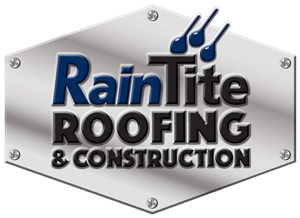Roof leaks can cause a range of problems for Rapid City homeowners, from minor cosmetic damage to severe structural issues. Early detection, prevention, and effective maintenance are crucial in avoiding expensive repairs or even roof replacement. With a comprehensive understanding of the signs of a leaking roof, the potential causes, and effective preventative measures, homeowners can ensure their property remains protected, healthy, and well-maintained.
In this ultimate guide to roof leak detection and preventative maintenance, we will cover essential topics, including common signs of roof leaks and the importance of regular roof maintenance for leak prevention.
Common Signs of Roof Leaks
Early detection of roof leaks is critical for preventing further damage and reducing repair costs. Homeowners should be aware of the following indicators that suggest a potential leak:
1. Water stains: Dark or discolored spots on ceilings or walls may indicate moisture accumulation from a leak.
2. Damp, moldy odors: Persistent musty smells may signal the presence of mold caused by moisture seepage in the roof or walls.
3. Paint blistering: Bubbling or peeling paint caused by moisture trapped behind the paint film.
4. Sagging ceiling: Waterlogged structural materials can lead to a sagging or bulging ceiling.
5. Mold and mildew growth: Excessive moisture from leaks leads to mold and mildew growth on ceilings, walls, or insulation.
6. Damaged or missing shingles: Damaged shingles or exposed underlayment can cause water infiltration.
Potential Causes and Contributing Factors of Roof Leaks
Understanding the causes of roof leaks helps homeowners identify and address the issue more effectively. Common causes and contributing factors of roof leaks include:
1. Damaged or aged flashing: Flashing, the thin metal strips installed at roof joints, can corrode, deteriorate, or become damaged over time, allowing water to seep through the joints.
2. Damaged or worn shingles: High winds, hail, or general wear and tear can result in broken, curled, or missing shingles, exposing the roof to leaks.
3. Clogged gutters: Blocked gutters prevent proper drainage, causing water to back up and seep under the roof structure.
4. Damaged or unsealed roof vents: Cracked, broken, or improperly sealed roof vents can allow water ingress.
5. Ice dam formation: In colder climates, ice dams can form as the snow melts and refreezes on the roof edge, forcing water under the shingles.
6. Skylight leaks: Improper installation or sealing of skylights creates vulnerabilities for water entry.
7. Chimney and roof junctions: Damaged or compromised seals between the chimney and roof can result in leaks.
Effective Methods for Roof Leak Detection and Diagnosis
Regular inspection and prompt action are crucial in detecting and addressing roof leaks. Homeowners can follow these steps to identify possible leaks:
1. Inspect your attic: During daylight hours, check the attic for signs of sunlight entering through the roof, indicating gaps or damaged areas.
2. Check for water stains or mold: Inspect the ceiling, walls, and attic for water stains, mold, or damp areas.
3. Inspect the roof: Use a ladder or binoculars to examine your roof for damaged, curled, or missing shingles, as well as compromised flashing around vents, chimneys, and other penetrations.
4. Perform a water test: On a dry day, have a helper spray water on suspected leak areas while you monitor for water infiltration inside the home.
5. Hire a professional: For a thorough assessment of your roof’s condition, consult a qualified roofing professional for a detailed inspection and leak identification.
Importance of Regular Roof Maintenance for Leak Prevention
Proactive roof maintenance is vital for avoiding leaks and prolonging the life of your roof. Homeowners can take the following steps to minimize the likelihood of leakage:
1. Schedule regular inspections: Bi-annual roof inspections, ideally in spring and fall, help identify potential problems before they become more extensive and costly repairs.
2. Clean gutters and downspouts: Regularly clearing gutters and downspouts of debris ensures proper drainage, reducing the risk of leaks.
3. Trim overhanging branches: Trimming tree branches that overhang the roof prevents damage to shingles and makes leaf and debris accumulation less likely.
4. Monitor roof vents and other penetrations: Regularly inspect roof vents, skylights, and chimneys for damage or signs of water infiltration.
5. Address damaged or missing shingles promptly: Repair or replace damaged or missing shingles before they cause water seepage.
Final Thoughts
The key to preventing and addressing roof leaks in your Rapid City home lies in understanding the signs, causes, and contributing factors of leaks, as well as implementing regular maintenance and inspection practices. Homeowners who prioritize proactive care for their roofing systems can avoid costly repairs and maintain the value and safety of their property.
If you suspect a roof leak or require expert advice and assistance for roof maintenance, the Roofing Company of Choice in Rapid City is here to help. Our experienced team is dedicated to providing exceptional service and ensuring your roof’s longevity and performance.
Contact us today to schedule a free inspection and consultation. Let our expertise put your mind at ease, knowing that your Rapid City home remains protected and well-maintained year-round.

